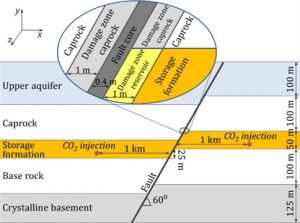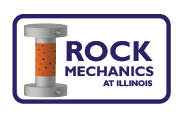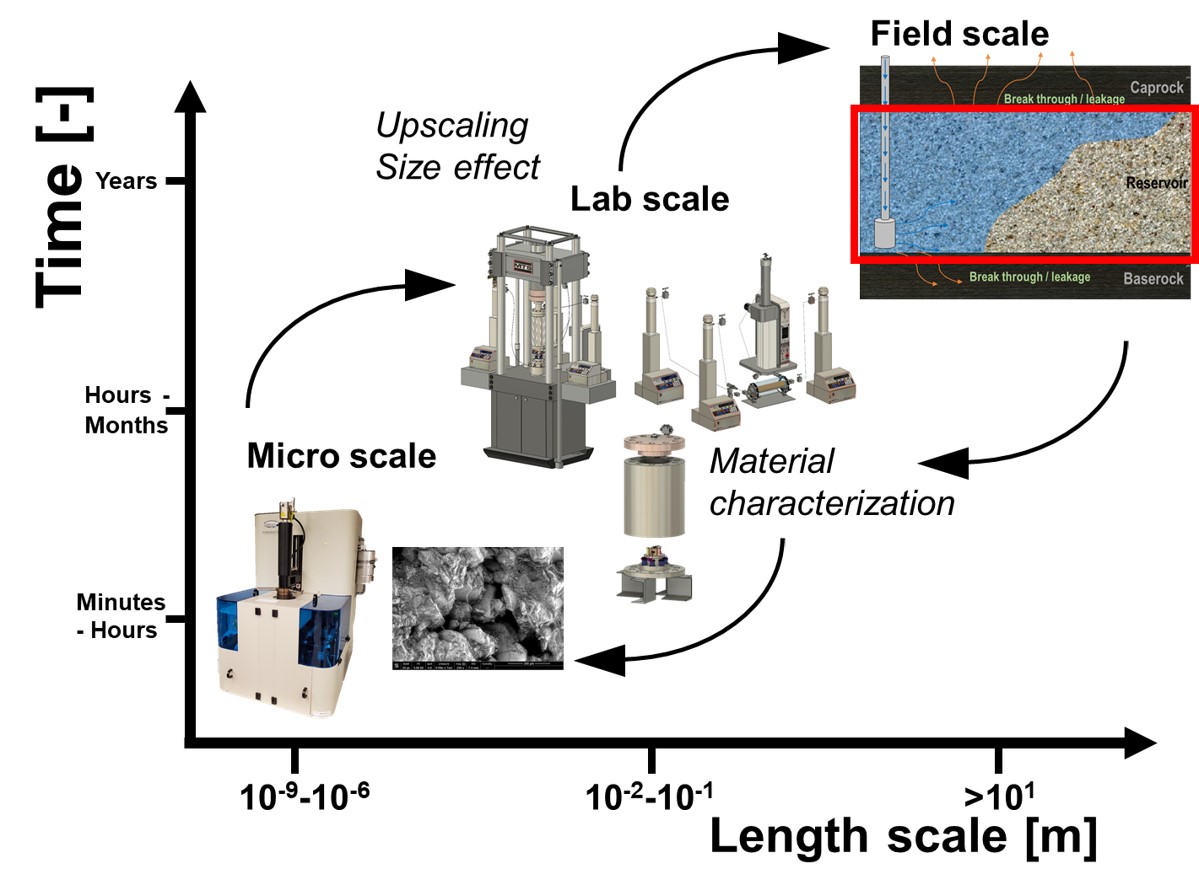For most geoengineering projects, rock characterization is crucial in terms of their performance and stability. An important feature of accessible rock masses is that they are weathered or fragmented, which may be manifested as joints and faults. Therefore, proper characterization of the rock response needs to be conducted at different scales: from nano-micro scale to the millimeters-centimeters scale (lab scale) and eventually considering the field scale. For each length scale, the involved testing method differs due to the sample size, where the corresponding time also needs to be considered. In this section, a brief introductory is presented for the experimental methods at different scales that are utilized in the rock mechanics group.
LABORATORY SCALE
1) Nanometers
At nanometers scale, measurements of porosity and evaluation of the pore size distribution are conducted using the mercury intrusion porosimetry (MIP) device. Understanding the porosity provides knowledge on the pore volume that can be directly related to the storage capacity for reservoir rocks, which can also be extended to applications in the petroleum industry for oil and gas recovery. Information on the pore size distribution allows evaluation of the dominant pore size and can be utilized to calculate the capillary pressure and breakthrough pressure for the involved rocks in CO2 storage projects. The MIP system consists of low- and high-pressure chambers, and can generate pressure up to 413.7 MPa (60,000 psi), and forces mercury to penetrate the pores while accurately measuring the injected volume.
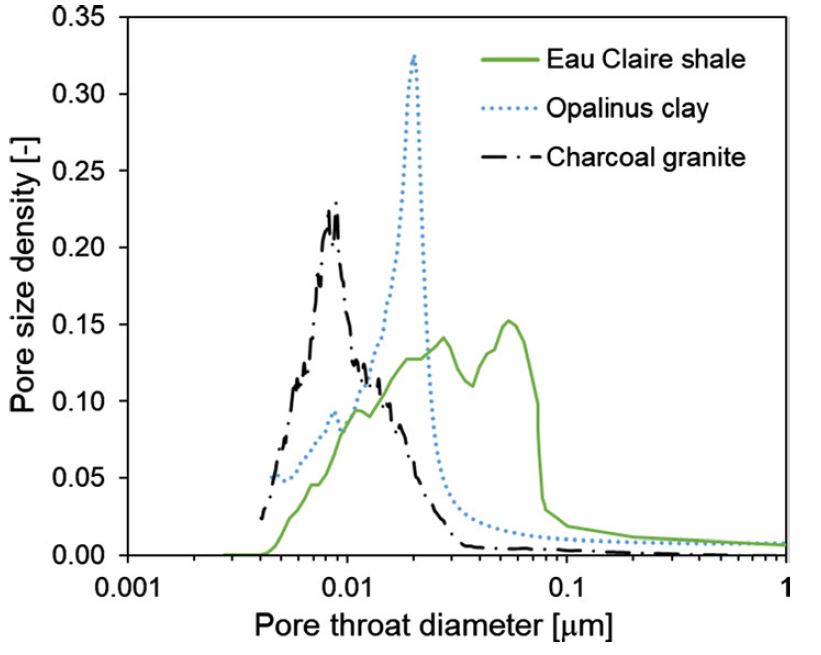
2) Nano- to Micrometers
For nano to microscale, the field-emission environmental scanning electron microscope (ESEM-FEG) can be utilized to understand the microstructure of rock materials. This versatile microscope allows high-resolution measurements up to 2nm ultimate resolution with the secondary electron detector. Microimages of the pore structure can be assessed, and the elemental composition of the material can be analyzed by using the EDAX light-element-dispersive spectroscopy (EDS).
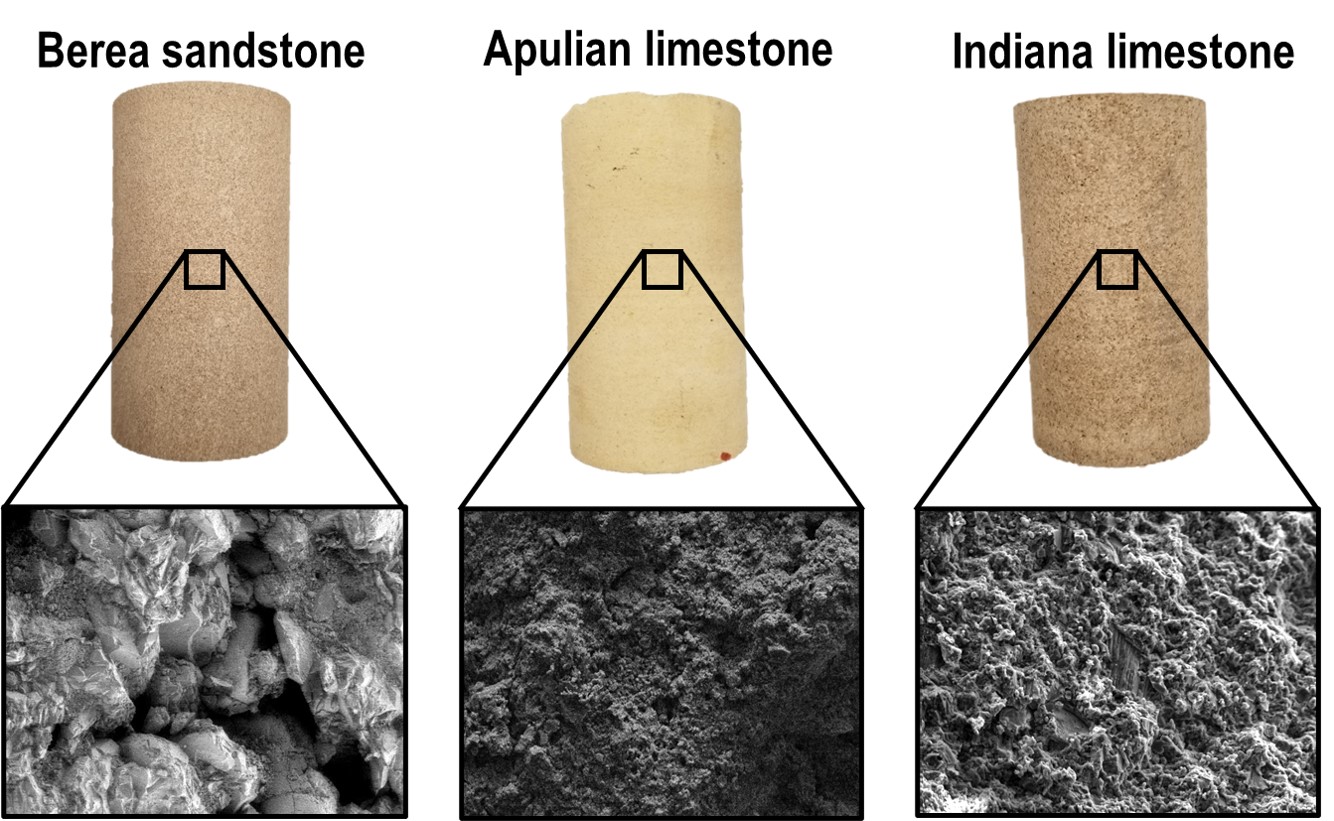
3) Milli- to Centimeters
For milli- to centimeters, laboratory experiments can be conducted to measure the poromechanical properties, using different devices. The most typical sample is prepared in the cylindrical shape, with 50mm diameter and 100mm length. Depending on the diffusion time, a smaller sample can be prepared to shorten the experimental time. The advanced triaxial cell allows measurements of all poromechanical properties, but for optimizing the experimental time and to enhance efficiency, the core flooding device and the hydrostatic compression cell can be simultaneously used to measure the flow properties and compressibility, respectively. Detailed explanations on each device are elaborated in the “Facilities” section.

FIELD SCALE
1) Meters
At meter scale, field tests can be conducted to monitor the rock behavior at the field scale and the size effect of the material properties can be evaluated. For instance, a field rock mechanics laboratory for the Mont-Terri project allows experiments in the rock gallery for different tasks such as CO2 injection and diffusion for caprock.

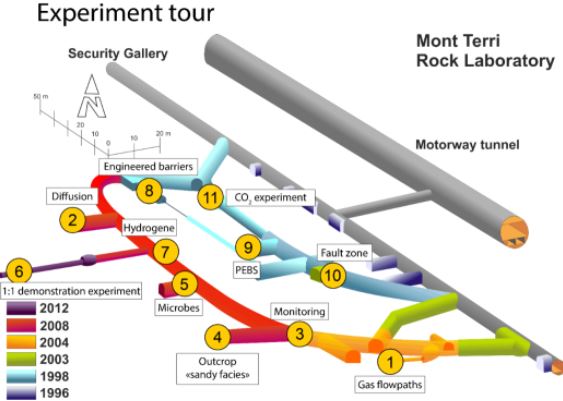
(www.mont-terri.ch)
2) Reservoir
For reservoir scales, computational simulations can be conducted considering the pre-existing faults within the geo-energy projects, that may crucially affect the success and stability of the system. Based on the laboratory experiments and field tests, the input parameters for the simulation can be accurately determined. By utilizing proper simulation, the rock behavior in the reservoir scale can be predicted for the practically required time-scale, up to thousands of years.
